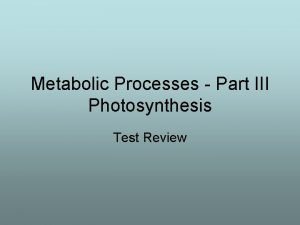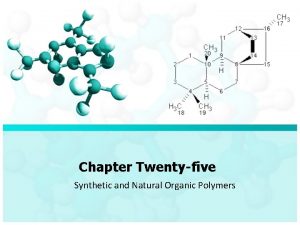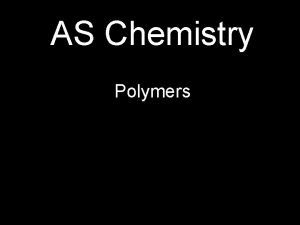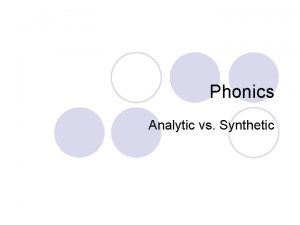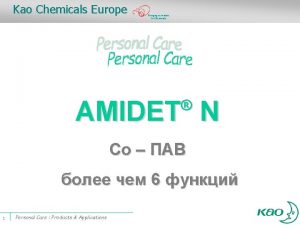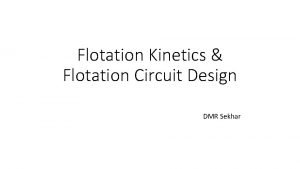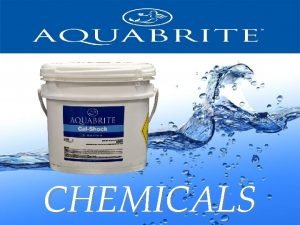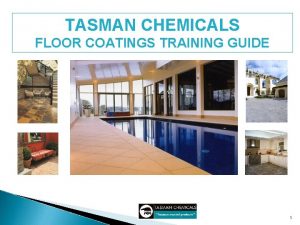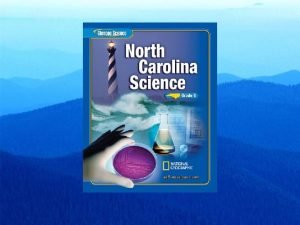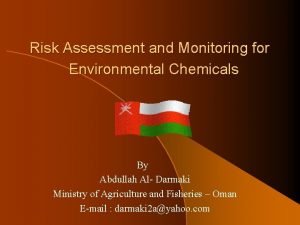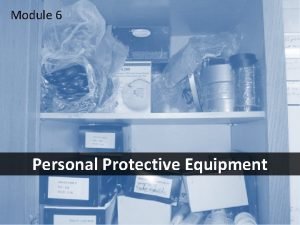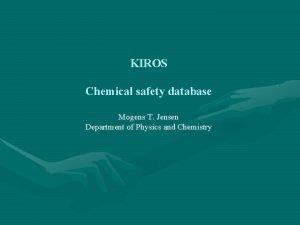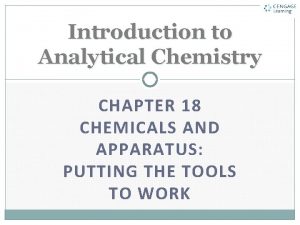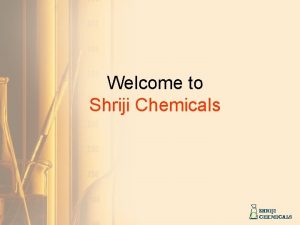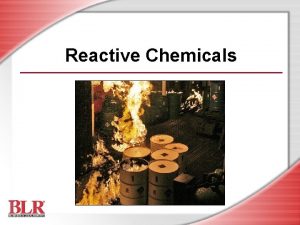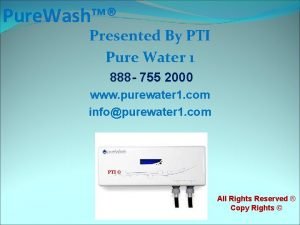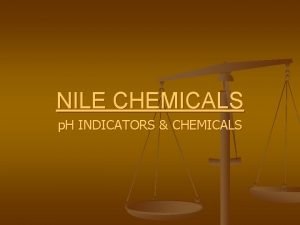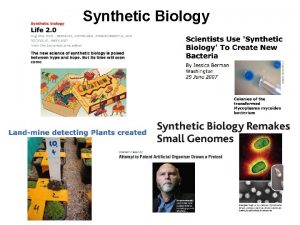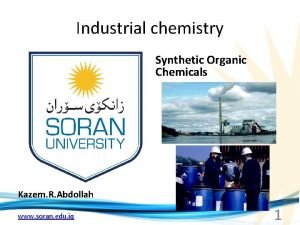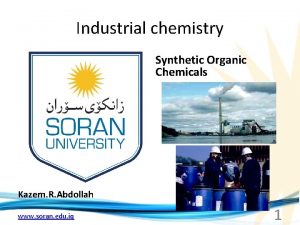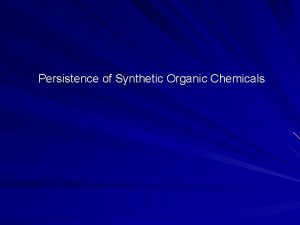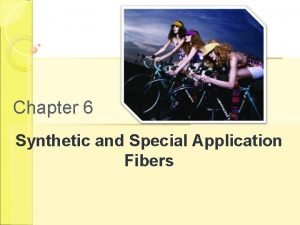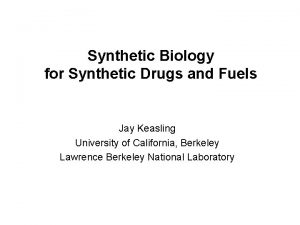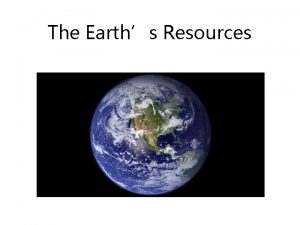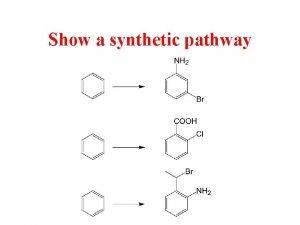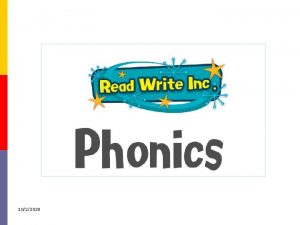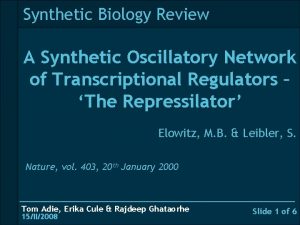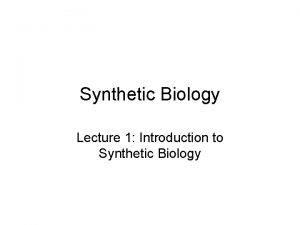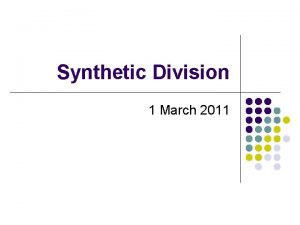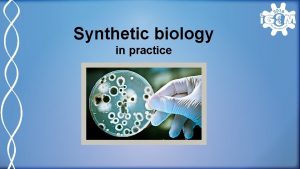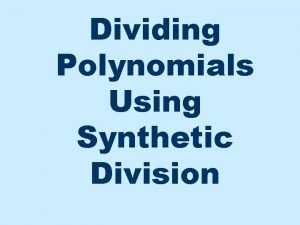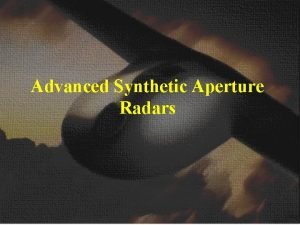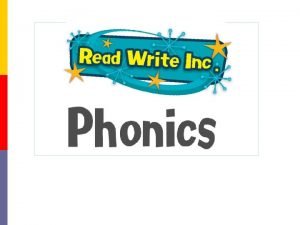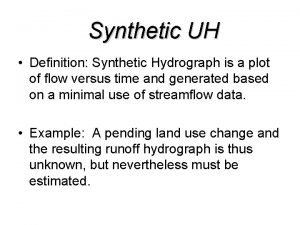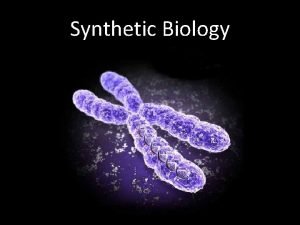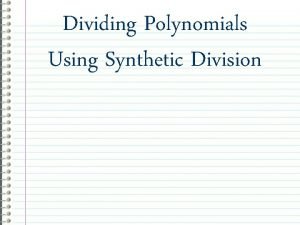Organic Chemicals and Water Synthetic Organic Chemicals Principally













![[EPA press release - April 19, 1979] The Environmental Protection Agency today issued final [EPA press release - April 19, 1979] The Environmental Protection Agency today issued final](https://slidetodoc.com/presentation_image_h2/388a3b3524ffeb8c54e767bde6f94343/image-14.jpg)
















- Slides: 30

Organic Chemicals and Water

Synthetic Organic Chemicals Principally Carbon, Hydrogen and Oxygen Organochlorines Dioxins Pesticides Chlordane Dioxin PCBs Cleaning agents DDT PBDE Flame Retardants

Potential Toxicity July November 2004 Viktor Yushchenko Ukrainian President 6, 000 times the usual concentration in his body the second highest dioxin level ever measured in a human

Water Solubility Organochlorines as well as many other synthetic organic compounds are poorly soluble in water

Na. Cl Na+ + Cl-

Dioxin

Dioxin PCB 0. 2 µg/L 10 -31 µg/L (50% Cl) Sodium Chloride 350 g/L Potassium Chloride 280 g/L Ionic compounds are about 1 billion times more water soluble than neutral organics

Improving Solubility Organic Solvents Soap/detergents Structural/chemical similarity between the chemical and the solvent. Hexane

Lipids and Solubility Structural/chemical similarity between the chemical and the solvent.

Solubility A chemical’s solubility in lipids is inversely proportional to its solubility in water. Lipid (Carbon/hydrogen) Carbon/hydrogen water

Toxaphene Biomagnification Seawater Arctic cod muscle Narwhal blubber 0. 0003 ppb 14 - 46 ppb 2440 - 9160 ppb BAF = 8 million

What’s been done?

PCBs used extensively in electrical equipment, especially transformers Solubility: 10 -31 µg/L PCBs, valued for chemical stability and fire resistance, were manufactured and processed primarily for use as insulating fluids and coolants in electrical equipment and machinery from 1929 -1977. Electrical equipment plasticizers in paints, plastics and rubber products pigments, dyes and carbonless copy paper PCBs were “banned” in 1979
![EPA press release April 19 1979 The Environmental Protection Agency today issued final [EPA press release - April 19, 1979] The Environmental Protection Agency today issued final](https://slidetodoc.com/presentation_image_h2/388a3b3524ffeb8c54e767bde6f94343/image-14.jpg)
[EPA press release - April 19, 1979] The Environmental Protection Agency today issued final regulations banning the manufacture of polychlorinated biphenyls (PCBs) and phasing out most PCB uses. PCBs are toxic and persistent chemicals primarily used as insulating fluids in heavy-duty electrical equipment in power plants, industries, and large buildings across the country. The EPA rules will gradually end many industrial uses of PCBs over the next five years, but will allow their continued use in existing enclosed electrical equipment under carefully controlled conditions. EPA estimates that 150 million pounds of PCBs are dispersed throughout the environment, including air and water supplies; an additional 290 million pounds are located in landfills in this country

Spokane River Nov. 2002

Lake Michigan EPA, 2004 N Concentration PCBs µg PCB/Kg sediment

Lake Erie Sediments PCBs EPA, 2004 After 25 years, PCBs continue to persist in the Environment

Persistent Organic Pollutants Poor water solubility High solubility in Lipids and Organic Solvents Potentially long half lives DDT PCB Dioxin

Half Life

½ Life The time it takes for a chemical to degrade To ½ of its original concentration. Ci ½ Ci t 1/2 time

½ Life and Organochlorines PCBs 1 month 2 -6 years > 60 years Dioxin 1 - 30 years (7 years in humans) DDT 28 days 15 – 20 years up to 150 years

Environmental Persistence Water Column Solubility of < 0. 2 μg/L Short Half life Sediments (longer half-life)

Environmental Persistence, Half Life and Solubility

An Important Organic Solvent: Octanol C 8 H 18 O Neutral organic chemicals are soluble in organic solvents

The Octanol-Water Partitioning coefficient C 8 H 18 O Octanol and water are immiscible Density: 0. 824 g/cm 3 octanol water C 8 H 18 O

Partitioning Carbon/hydrogen Octanol (Carbon/Hydrogen) water C 10 H 20

Add 10 mg chemical 1 L Octanol 1 L Water separate chemical Analyze the water phase for the chemical. Difference between initial amount and amount in water = amount in octanol The ratio between the two yields the Kow

Add 10 mg chemical 1 L Octanol 1 L Waterl separate chemical 0. 01 mg L Water phase 9. 99 mg L octanol phase Kow = 9. 99 mg L 0. 01 mg L = 999

Kow of some Organochlorine Compounds PCBs 2, 000 DDT 4, 000 Dieldrin 158, 000 Toxaphene 316, 000

Environmental Persistence Water Column Solubility of < 0. 2 μg/L Short Half life Sediments (Carbon)
 Water and water and water water
Water and water and water water Commodity vs specialty chemicals
Commodity vs specialty chemicals Photorespiration occurs principally because of
Photorespiration occurs principally because of Synthetic organic polymers
Synthetic organic polymers Nylon demo
Nylon demo Threshold limit value of ammonia
Threshold limit value of ammonia Unit 3 house and home
Unit 3 house and home You must put all chemicals and drugs in locked cupboards
You must put all chemicals and drugs in locked cupboards Formula of remainder theorem
Formula of remainder theorem How to write remainder in synthetic division
How to write remainder in synthetic division Synthetic division method
Synthetic division method Synthetic phonics vs analytic phonics
Synthetic phonics vs analytic phonics Synthetic bible study method
Synthetic bible study method Synthetic divition
Synthetic divition Division remainder theorem
Division remainder theorem Fwa dan dwa
Fwa dan dwa Workkeys applied mathematics level 4 answers
Workkeys applied mathematics level 4 answers Kao chemicals
Kao chemicals Kinetics flotation chemicals
Kinetics flotation chemicals Aquabrite super shock
Aquabrite super shock Tasman chemicals
Tasman chemicals Exothermic chemicals
Exothermic chemicals Oman chemicals
Oman chemicals 6 personal protective equipment
6 personal protective equipment Kiros.dk
Kiros.dk Introduction to analytical chemistry
Introduction to analytical chemistry Shriji chemicals
Shriji chemicals Reactive chemicals
Reactive chemicals Pti chemicals
Pti chemicals Nile chemicals
Nile chemicals On july 18 2001 a train carrying hazardous chemicals
On july 18 2001 a train carrying hazardous chemicals


